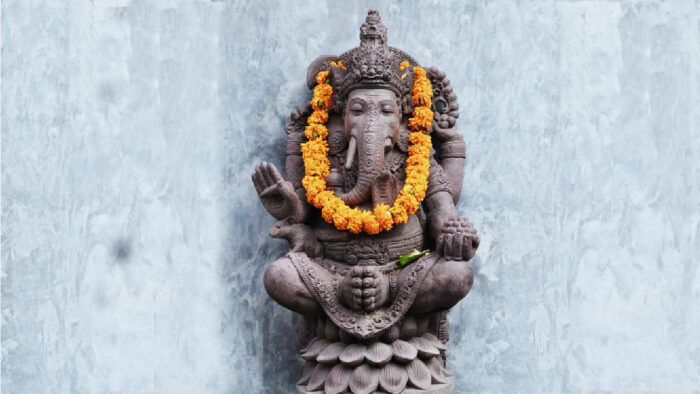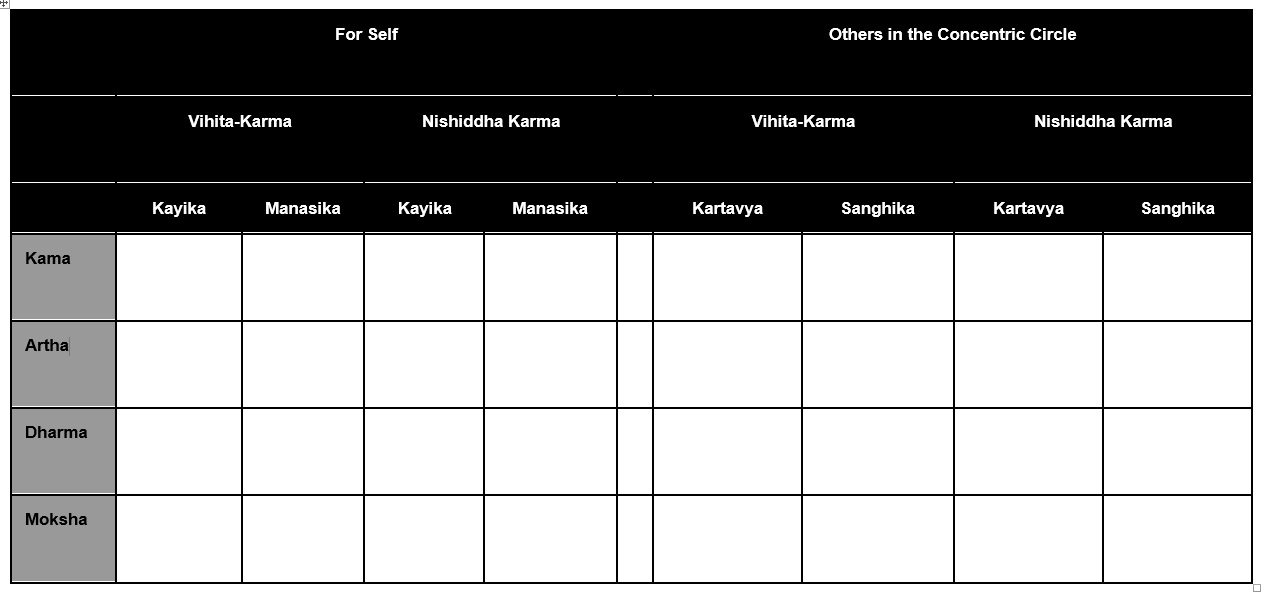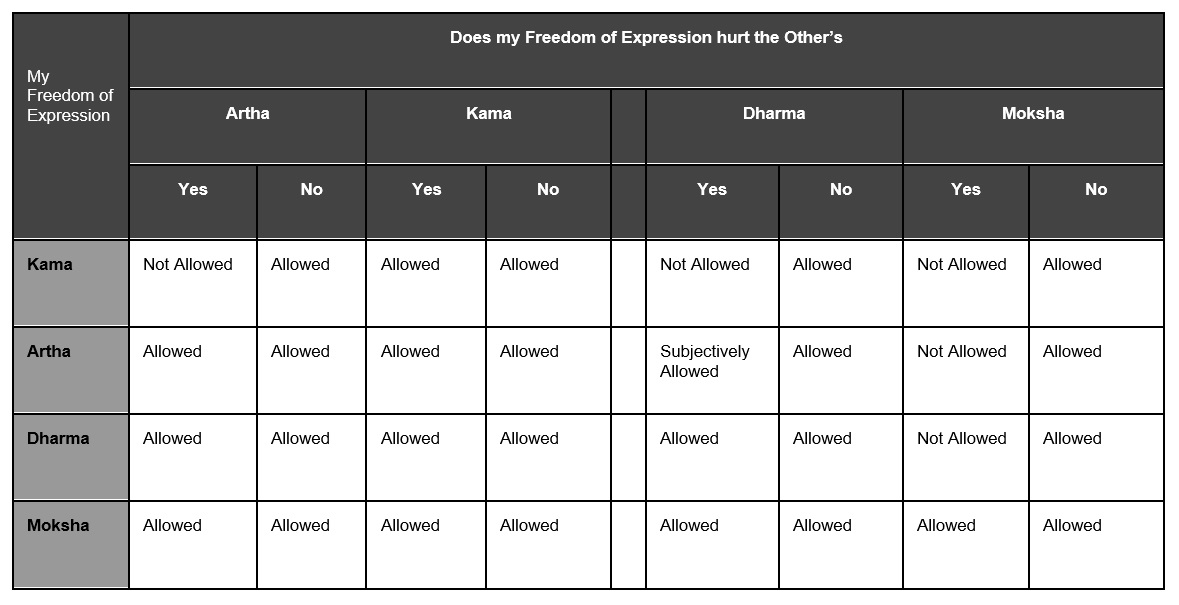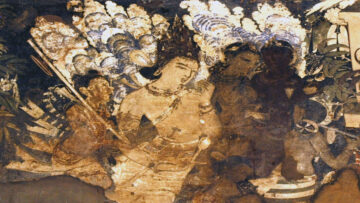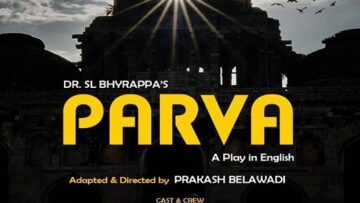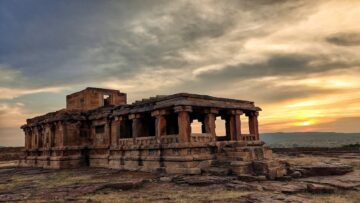Introduction
Modern Liberal world is pivoted on Individual Rights. Liberty accords primacy to the Rights of an Individual. Constitutions of the world are centred around what are the Rights of an Individual along with restrictions. Modern Philosophies and Ideologies greatly elaborate on why Liberty of an Individual is so important and hence Individual Rights. The Rights of an Individual guaranteed by States through Constitutional Law are manifestations of what Liberty seems to promote or achieve for the individual. This primacy of Individual Rights, in the modern world, is articulated contrasting it with or in opposition to the Rights of a Group – the Family, the Community, the Village or the place of living, or the Nation. Liberal Philosophies have emphatically articulated why Individual Rights must be above that of Group Rights, if any.
Surprisingly, we, the Bharateeyas, have seen five thousand years of Civilization without the notion of these Individual Rights. There were always severe limits to what one could do in Bharatavarsha. Yet, there was never a clamour for Individual Rights, even that term does not seem to have an equivalent in any of our literature. In the recent past, Indic Thinkers have attempted to balance the Individual Rights with Individual Duties. Yet, our Smriti-s, which contain guiding principles for a Law, and actual Law books do not contain the term Kartavya very significantly. Practically, it is the right thing to place Individual Duties alongside Individual Rights in a Modern Constitution to bring it close to Indic thought, yet that falls short. Something is amiss.
This paper presents ‘Karma’ as the defining principle of Bharateeya Parampara on which the society anchored itself, instead of Individual Rights or Duties.
The Karma
‘Karma’ is that one ought to perform in order to pursue Purushartha and to sustain the Universe of Life. In Modern terms, ‘Karma’ is one’s Duty as well as a Right. One has the Duty to bring up one’s children and that is one’s Right as well. In many ways, ‘Karma’ encapsulates one’s Rights as well as one’s Duties. However, ‘Karma’ is not conceptualised in a Vacuum.
It is based on a very clear ‘World View’ of Srishti-Sthiti-Laya (SSL) which leads to the ‘Purushartha’ goal framework for an Individual. That is not all. ‘Karma’ is articulated uniquely within the cultural universe of a society organized on the principles of Srishti-Sthiti-Laya (SSL) and Purushartha. In order to understand Karma, one has to understand the SSL, the Purushartha and the Social Organization architected in alignment with the first two. Along with this come a host of other things such as our perspective of Change and Time. ‘Karma’ is placed in a very large Philosophical complex from which Individual Rights/Duties, Community Rights/Duties are all standing in balance to realize Dharma.
This relationship of the Karma with the Srishti-Sthiti-Laya and Purushartha can be described as below.
- The Universe must always be
- Stable
- In Equilibrium
- Dynamic
This desired state of the Universe is referred to as ‘Sthiti’
- The dynamic of the Sthiti is referred to as ‘Srishti’ that moves the Universe from one point in the Universe of Life to another. It is hoped that each such point is a Sthiti-Point.
- The dynamic of life of a human being is derived from this relationship between Sthiti and Srishti.
- Moksha represents our merging with the Sthiti of the Universe
- Artha and Kama is that which corresponds to the Srishti of the Universe. Our desires and actions contribute to the movement of the Universe from one point to another.
- Dharma is that which seeks to balance Artha and Kama, i.e., Srishti to be in the path of Moksha seeking Sthiti.
- Karma is that collective of Actions that in accordance with Dharma strives to elevate us to Moksha.
- Greater the Karmic Quotient of the society closer is the Universe of Life to Sthiti and hence more sustainable, just and fulfilling to the entire humanity.
This Metaphysics makes Karma a core part of our Justice framework. This essay is concerned with an elaboration of this framework where Karma is at the centre – in particular how we can draw Fundamental Rights too from this framework.
Karma Categorization
Bharateeya Parampara does not merely articulate Karma at the level of Principles. Karma is positioned and articulated at various levels in accordance with the Purushartha framework. This categorization and correspondence finally helps us to draw a framework of Fundamental Rights that stands in parallel to the Modern Fundamental Rights of our Constitution and reshape it for our perspective of life.
Categorization-1: The Voluntary and the Involuntary Karma
The Shastras present the Karmic world view in multiple dimensions. This section provides a summary view of the Karmic world as is sufficient for the purpose of this paper.
At a very fundamental level, there are two types of Karma
- The Voluntary Karma
- The Involuntary Karma
The Voluntary Karma are those that generate pApa and puNya – merits and demerits. They are the consequence of acts performed by us through the explicit application of mind. Further, they could be physical acts, acts of mind within the mind or that of the intellect with a tangible expression of the same.
The Involuntary Karmas are those that do not generate pApa and puNya. They are performances of the body beyond that of the explicit expression of mind.
Both the Voluntary and Involuntary Karma-s have the dimension of kAyika (bodily) Karma and the mAnasika (mental) Karma.
Nevertheless, the Individual Rights are concerned with both dimensions and we shall explore this in a later section. However, considerations for the Individual Rights are different for these two categories.
Categorization-2: The Beneficial and Harmful Karma
The Karma can also be classified based on the impact they create. They can be beneficial and harmful at multiple levels.
The benefit or harm can be at multiple levels.
- To the Self
- To the Family
- To the Community
- To the Rashtra
Further, this benefit or harm could be at the different level for each of the Purushartha – Kama, Artha, Dharma and Moksha.
We shall see in a later section how the Individual Rights can be drawn as a consequence of this relationship.
Categorization-3: Vihita Karma and Nishiddha Karma
Based on the categorization of benefit/harm, Shastras have further elaborated on some non-negotiables
- Vihita Karma
- Nishiddha Karma
Vihita Karma is all that Karma that one must mandatorily perform failing which one accrues pApa. It is minimally necessary to the Purushartha of the Self, Family, Community and Rashtra. There is no Punya that one accrues by performing the Vihita Karma. However, non performance certainly accrues pApa.
Nishiddha Karma is all that Karma that one must mandatorily not indulge in failing which one accrues pApa. Every single act threatens the Purushartha balance of the Self, Family, Community and Rashtra decidedly.
Between the worlds of Vihita Karma and Nishiddha Karma there is an infinite world of Artha, Kama where our Karma-s need to be aligned with the Dharma.
By the virtue of being associated with the Family/Community/Rashtra, we inherit some Sanghika Karma – in the dimensions of Vihita and Nishiddha. Fundamentally, every organization with which we are affiliated brings its own set of Karma-s. By default, all of us are part of the Rajya/Rashtra and hence we share an associated set of Rajya/Rashtra Karma-s as well.
Similarly, by being born into a specific context of Kula/Jati/Varna – we inherit Kartavya-Karma according to our Svabhava and Svadharma of our context – in the dimensions of Vihita and Nishiddha.
Categorization-4: The aihika and pAramArthika Karma
Aihika-Karma are all that are in the realm of Artha and Karma and fundamentally the Sanghika and Kartavya-Karma.
Paramarthika-Karma is that which furthers our journey in the path of Moksha such as Nitya-Karma, Naimittika-Karma, Shrouta-Karma, Smarta-Karma, Pouranika-Karma, Vidhayaka Karma etc.
There are many more categorizations of the Paramarthika Karma which are beyond the concern of this article and hence left out.
Rights and Duties within the Framework of Karma
Given that the basic framework of Karma does not recognize a separation of Rights and Duties – how do we define Rights and Duties within the Framework of Dharma? The Purushartha framework once again comes to our support to define Rights and Duties.
- Karmic Rights are those Karma-s that are fundamentally necessary for one to pursue one’s Purushartha towards Moksha.
- Karmic Duties are those Karma-s that one must necessarily perform without which one may lose certain Karmic Rights blocking one’s progress in the journey of Purushartha towards Moksha.
Thus, Rights and Duties being anchored on Karma in such a manner results in interdependencies. When one does not perform a certain Karmic Duty, one loses a Karmic Right. Similarly, when one performs a Duty one also earns additional Karmic Rights. If one has significantly contributed to the pursuit of Purushartha within a community, one earns more Karmic-Rights to accumulate higher material wealth – as one’s ability to contribute to Purushartha of others is higher. Greater the invocation of Rights, higher the quotient of duties that one has to fulfil in the future. Greater the performance of Duties, higher the quotient of rights one earns in the future. Thus, there is a dynamic relationship between the Rights and Duty.
In the pure realm of Sacred, it is easy to define this relationship. If one performs a Yagna-1 only then one earns the Karmic Right to perform Yagna-2 – is quite easy to define. However, complications arise when such a notion is extended to the material realm. If I do not perform a Karmic Duty, what is it that I am likely to lose in the material realm of Artha/Kama? Similarly, if I do not perform a Karmic Duty in the material realm of Artha/Kama what other Karmic Right is one going to lose? If one does not contribute to the education of a Kid, is one to lose rights over family property – these are complicated matters in the realm of Karmic Rights and Karmic Duties.
All these complications arise for three reasons.
- None of this needed a Law in the past to institutionalize, administer and govern as life was led within Communities (Kula-Jati-Varna) organization. Society had the means to act, influence and shape these without needing modern structures, institutionalization and codification.
- The interdependence of Rights and Duties was completely accepted, assimilated into the culture and daily life.
- Society did not pay a higher premium on the Individual in terms of Liberty and Rights.
However, Modern Life has shifted into a realm where all the above are in problematic zones.
- The Individual is supreme.
- Liberty of an Individual carries a very high premium.
- All Modern Constitutions are anchored/pivoted on Individual Rights – as Fundamental Rights. Fundamental Duties are at best a soft expectation, narrative. Constitutions merely plead Fundamental Duties. One may not take care of One’s parents but one still has a right over ancestral Property.
- Most ancient communities have significantly loosened if not destroyed or dead. This is both a consequence of higher premium paid on Individual Rights as well as the higher order Industrial Dynamic which requires Individuality – which is a consequence of the evolution of modern technology in the last 300 years.
But these are realities that we cannot wish away. Even if we could push back on the premium paid on Individual Rights in Modern Constitutions, we cannot undo and reconstitute the Industrial Dynamic very easily for some Centuries. Community life will need to be freshly imagined and that requires years of negotiation with the Industrial Dynamic. Given that, the only option in front of us is to operate within the realm of Individual Rights and higher order Industrial-Dynamic but temper them towards the journey of one’s Purushartha.
Reflecting Karmic Rights and Duties onto the Modern Plane
Fortunately, the Purushartha Framework is capable of rehashing itself into the world of Individual Rights, with the Srishti-Sthiti-Laya dynamic providing the guiding framework. In this world of Srishti-Sthiti-Laya every action has a Karmic consequence on the state of the universe and its dynamism. It either pushes you towards Sthiti or away from Sthiti. It either upholds Dharma or disturbs Dharma. Thus, it is possible to argue that any action of ours that furthers Sthiti should be a Fundamental Right of the individual. However, such an abstract notion cannot be measured and institutionalised. That support is provided by the Purushartha framework which makes possible the creation of a philosophically strong definition of Rights and Duties pivoted on Karma.
In the Context of one’s Rights, Four Principles emerge from the Purushartha-Karma framework:
- Right-Category-1: One has absolute Rights to perform all Karma associated with the pursuit of Moksha.
- Right-Category-2: One has absolute Rights to perform all Karma that enhances Dharma in the Universe of Life.
- Right-Category-3: One has conditional Rights to perform all Karma that enhances one’s Artha (Security) without disturbing others’ Artha and Moksha.
- Right-Category-4: One has conditional Rights to perform all Karma that enhances one’s Kama (Desires) without disturbing others’ Kama, Artha and Moksha.
- Right-Category-5: One has conditional Rights to perform any Karma that enhances the Artha and Kama of others in the concentric Circle of Life without disturbing Dharma.
With respect to Duties, Three more Principles could be drawn from the same Purushartha-Karma framework.
- Duty-Category-1: It is one’s Fundamental Duty to perform all Karma that is minimally required to uphold Dharma in order to sustain the universe of life (Rta).
- Duty-Category-2: One has the Fundamental Duty to perform all Karma that is minimally required to create a path of self-realization for others in the Concentric Circle of Life (Rna).
- Duty-Category-3: It is one’s Fundamental Duty to perform all Karma that is minimally required to establish the Artha and Kama of others in the Concentric Circle of Life (Rna).
Bharateeya Parampara here defines Others in three Concentric Circles of Life – Family (kuTuMba), Samaja (jAti-kula-varNa) and the larger Kingdom (rAjya/rAShTra).
Since Modern Life pays a Premium to Rights over Duties, the latter could be minimally flipped as Rights to secure a space for the Individual to perform those Duties. Thus, the Duty related Principles could be re-articulated as:
- Right-Category-6: One has conditional Rights to perform any Karma that is minimally required to uphold Dharma in order to sustain the universe of life (Rta).
- Right-Category-7: One has conditional Rights to perform any Karma that is minimally required to create a path of self-realization for others (in the concentric circle of life) in the Concentric Circle of Life (Rna).
- Right-Category-8: One has conditional Rights to perform all Karma that is minimally required to establish the Artha and Kama of others in the Concentric Circle of Life (Rna).
The implication of moving Duties as Rights, if one wishes to perform such Rights, the State will have to protect one’s performance of such Rights.
It is necessary to articulate what we are achieving through this articulation of Right-Category Principles.
- Artha, Kama related Rights will not be able to trump Dharma and Moksha (Sacred) Rights.
- Duties get protection at the same level of Rights. Institutions in the Society protect only Rights, they do not protect Duties – they at best create a non-obstructing environment towards the same.
- We are indirectly bringing in the unrecognised elements of the society such as Family, Community and so on.
- We are making the Sacred an integral and guiding factor in the framing of Fundamental Rights.
Drawing Reasonable Restrictions from Vihita-Karma and Nishiddha Karma
What we have so far articulated is merely a set of Principles that could be used to draw Fundamental Rights. What we have done is to position Individual Rights philosophically in the Bharateeya Parampara. It is still a massive effort to take this forward to create Frameworks of execution and clearly articulate justiciable Fundamental Rights.
Two concepts in the Karmic Framework of Sanatana Dharma come very handy in elaborating the framework further. The Vihita-Karma and Nishiddha-Karma are two concepts that help us articulate.
- Vihita-Karma: These are mandatory Duties that one must perform which now become Fundamental Rights of a person that must be protected against Fundamental Rights of others in the realm of Artha/Kama.
- Nishiddha-Karma: These are actions that one must not perform and these must draw severe punishment.
Vihita-Karma helps us to add ‘Reasonable Restrictions’ to Fundamental Rights drawn from pure Artha/Kama such as ‘Freedom of Expression’ so that one’s Purushartha-journey is not affected. It would be an entirely different Paper to leverage the Vihita/Nishiddha Karma-s and articulate comprehensively Fundamental Rights with Reasonable Restrictions. They are currently written in the Sutra form and to draw modern Models from it would be a significant effort in itself. The table given below is an example instrument to realize such a construction.
We will need to extend the Vihita-Karma concept to all levels of Purushartha to draw an effective set of Rights as Modern Life is heavy on Artha/Kama. Vihita-Karma will need to subsume Modern concepts such as Liberty and Freedom of Expression. This exercise could be another paper in itself.
In this paper, we shall provide one specific application of the ideas developed above that could serve as a template in other cases.
Application of these ideas to the Modern Right of Freedom of Expression
Right to Freedom of Expression (FoE) is a very important Fundamental Right in India and across the world. Liberalism as a Philosophy and Liberty as a concept of premium has put FoE as its best foot forward. It is often a point of conflict between warring factions and between society and the state in many countries including India. Different States offer Freedom of Expression at different levels. The United States offers it with the greatest degree of freedom whereas European countries offer it at a restricted level. The Indian version of Freedom of Expression is restricted at various levels but the conflict between the Societal Ethos and the Constitutional Ethos is often seen on the ground.
The Framework described above can help us align the Freedom of Expression to a significant extent. In terms of the Purushartha-Karma we can articulate Freedom of Expression as follows.
- FoE is fully protected for one to pursue the Sacred Path of Moksha to the extent that
- It does not harm another’s pursuit in the Sacred Path of Moksha
- FoE is fully protected for one to explore Dharma to the extent that
- It does not harm another’s pursuit in the Sacred Path of Moksha
- FoE is protected for one to explore one’s Artha to the extent that
- It does not harm another’s exploration of Dharma
- It does not harm another’s pursuit in the Sacred Path of Moksha
- FoE is protected for one to explore one’s Kama to the extent that
- It does not harm another’s exploration of Dharma
- It does not harm another’s pursuit in the Sacred Path of Moksha
- It does not harm another’s seeking Artha
The word ‘another’ here represents other Individuals, Family, Community and the State from the Bharateeya Parampara perspective. In the realm of Sacred, all four can be retained and in the realm of others, the Individual and the State can be retained.
Thus, this framework provides a balanced definition of the Freedom of Expression. As long as one articulation is furthering one’s Purushartha one has full freedom. The moment it hurts another’s Purushartha it gets restricted. Freedom to criticise other religions exists in the realm of exploration of Dharma. But it must further the cause of exploration of Dharma, otherwise it is restricted. An abuse harms another person’s pursuit of the Sacred and hence is prohibited.
Not just that, ‘Duty’ flipped as ‘Right’ enables us to actively participate in the protection of Freedom of Expression in the realm of Purushartha. Thus, citizens’ rights to Dharmically act is not taken away and posited only in the Courts and the State.
The question then is how do we determine the following difficult cases of 3.a, 3.b, 4.a, 4.b, 4.c . When does a Karma in the Artha / Kama category not cross the said line.
When does one’s Freedom of Expression harm another’s Exploration of Dharma
This requires a broad definition of Dharma to be agreed upon. Based on multiple descriptions we can summarize Dharma as that which aligns Artha and Kama related Karma-s towards Moksha and makes them Sustainable. From the FoE standpoint, Dharma is that which evaluates the Sacred potential of any entity/phenomenon. In other words,
- It reflects upon the ability of an entity or phenomenon to create the Sacred.
- It reflects upon the ability of an entity or phenomenon to harm the Sacred.
- It reflects upon the ability of an entity or phenomenon to be sustainable.
Thus, any object of FoE merely in the realm of Artha/Kama should not harm anybody else’s pursuit of the above as it affects the society’s ability to perform the right evaluation in the Sacred and Sustainability Spaces.
At the same time, it protects genuine criticism if the latter is in the form of reflecting upon impact on the Sacred and Sustainability.
When does one’s Freedom of Expression harm another’s pursuit of the Sacred
The terms of the pursuit of Sacred is always defined by a practising Community. As a consequence, the Practising community determines what are the instruments used in the pursuit of Sacred. In general, every Community Practises their pursuit in the following manner.
- Through sacred places where sacred practices are sacralised.
- Through defined and continuously evolving sacred practices.
- Through instruments of transferring a sacred practice to its community members.
Any object of FoE that denigrates sacred places, practices, instruments hurts their Fundamental Right to transfer their sacred practices to other family, community members and hence becomes a crime that is punishable – except when we are stating a material truth that is undeniable.
The nature of punishment should also come from the Purushartha domain itself. Any FoE violation should result in proportionate loss of FoE. Any FoE violation in the sacred domain should result in the absolute and complete loss of FoE in the realm of the entire Purushartha – Dharma, Artha, Kama, Moksha. Whether the State has the ability to implement such a thing is a different matter.
At the same time, this protects people who wish to speak the Truth, For instance, even when we consider Puranic Deva Indra as a sacred entity, referring to any uncomfortable Puranic tale cannot become the violation of FoE. However, interpreting that in a manner that hurts practitioners becomes a violation of the Freedom of Expression. Thus, reasonable restrictions to FoE can be established from the standpoint of the potential/actuality of the act to affect practice of a Religion.
Thus we arrive at the following table.
The Next Steps
What this paper recommends is a mere framework of thinking based on the Purushartha and Karma. The position of Karma in the Purushartha helps us look at FoE as also a Karma within the same realm and use that to redefine Individual Rights. Before we realize full-fledged Modern Laws based on the same there is a lot more work that needs to be done.
- The Framework needs to be applied on other’s Individual Rights guaranteed by the Constitution.
- The Framework needs to be applied to specific cases and evaluated in order to further fine-tune considerations for application.
- We also need to take a fresh look to imagine whether Individual Rights in their current form are necessary or if a new set could be positioned.
- The amount of traditional perspective leveraged here from the standpoint of Karmic Frameworks is very limited. The full might of the Tradition is yet to be brought in.
- Mitakshara and Dayabhaga systems need to be studied from the Individual Rights standpoint and their alignment with the Karma/Purushartha framework.
- In general, we need to reimagine the material world in terms of the sacred frameworks that are part of the Tradition. That is the only way in which we can align Iha and Para.
Feature Image Credits: dreamstime.com
Conference on Ethics Law & Justice
Watch video presentation of the above paper here:
Disclaimer: The opinions expressed in this article belong to the author. Indic Today is neither responsible nor liable for the accuracy, completeness, suitability, or validity of any information in the article.

